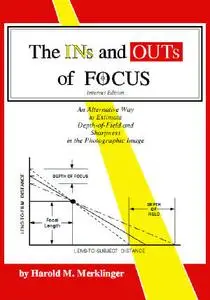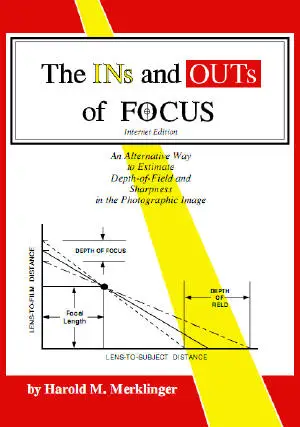The Ins and Outs of Focus by Harold Merklinger (Author)
Publisher: Seaboard Publishing (1992) | ISBN-10: 0969502508 | PDF | 2,2 Mb |
Publisher: Seaboard Publishing (1992) | ISBN-10: 0969502508 | PDF | 2,2 Mb |
Mastery over the imaging process is the goal. Limitations due to diffraction, focal length, f-stop, curvature of the field and film curl are weighed agaisnt what is possible.
The traditional depth of field theory, developed over a hundred years ago, deals with the ability of the image to portray detail. The usual standard is that the smallest detail need be no finer than the focal length of the camera lens (f) divided by 1500. (Most films are able to record detail about an order of magnitude finer.) The standard camera can focus precisely only at one subject distance, but if we accept the usual standard of acceptable sharpness, the lens is deemed to focus adequately well over a range of subject distances. That range of distances is called the depth of field. Applying this theory the way virtually all photography books suggest, Harold found he often obtained substandard images. He realized he was demanding a higher standard of resolution than f/1500, but when he adjusted the theory to reflect the resolution standard he was sometimes able to achieve, the depth of field would be vanishingly small and adequate focus ought to be just about impossible. This observation did not square with his observations either. Something seemed to be wrong with the theory.
Applying a little high school algebra Harold realized that there was nothing wrong with the physical theory. The basic assumptions on which the theory is based are simply not appropriate for some photographic applications. If one asks a slightly different question, one obtains surprisingly different answers. If one asks "What do I need to do to resolve objects a quarter-inch in diameter at any subject distance?", the answer is to use a lens aperture smaller than one-quarter of an inch and focus at infinity! Of course diffraction limits resolution if the lens aperture is too small.
What's too small? Should I ever focus at the hyperfocal distance? Should I always focus at infinity? What's the best aperture to use? These are some of the questions The INs and OUTs of FOCUS is intended to answer.



